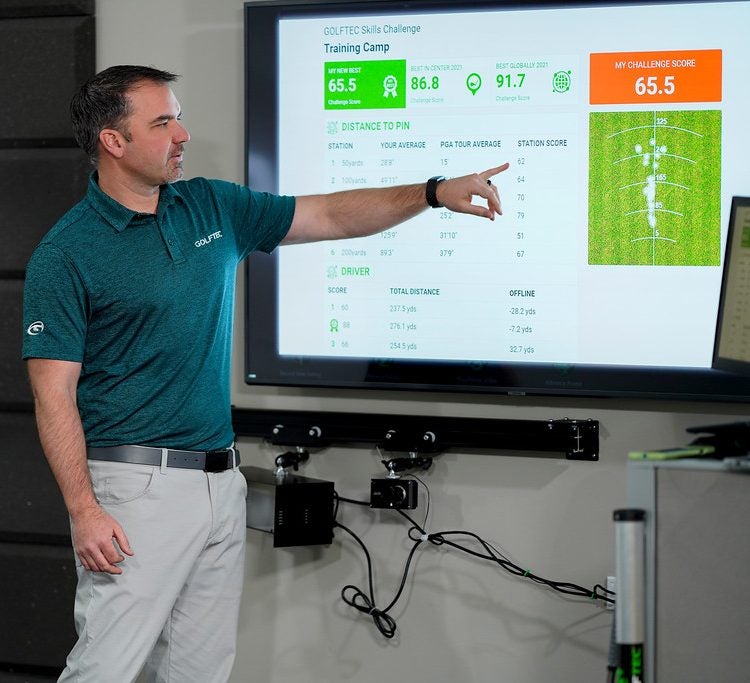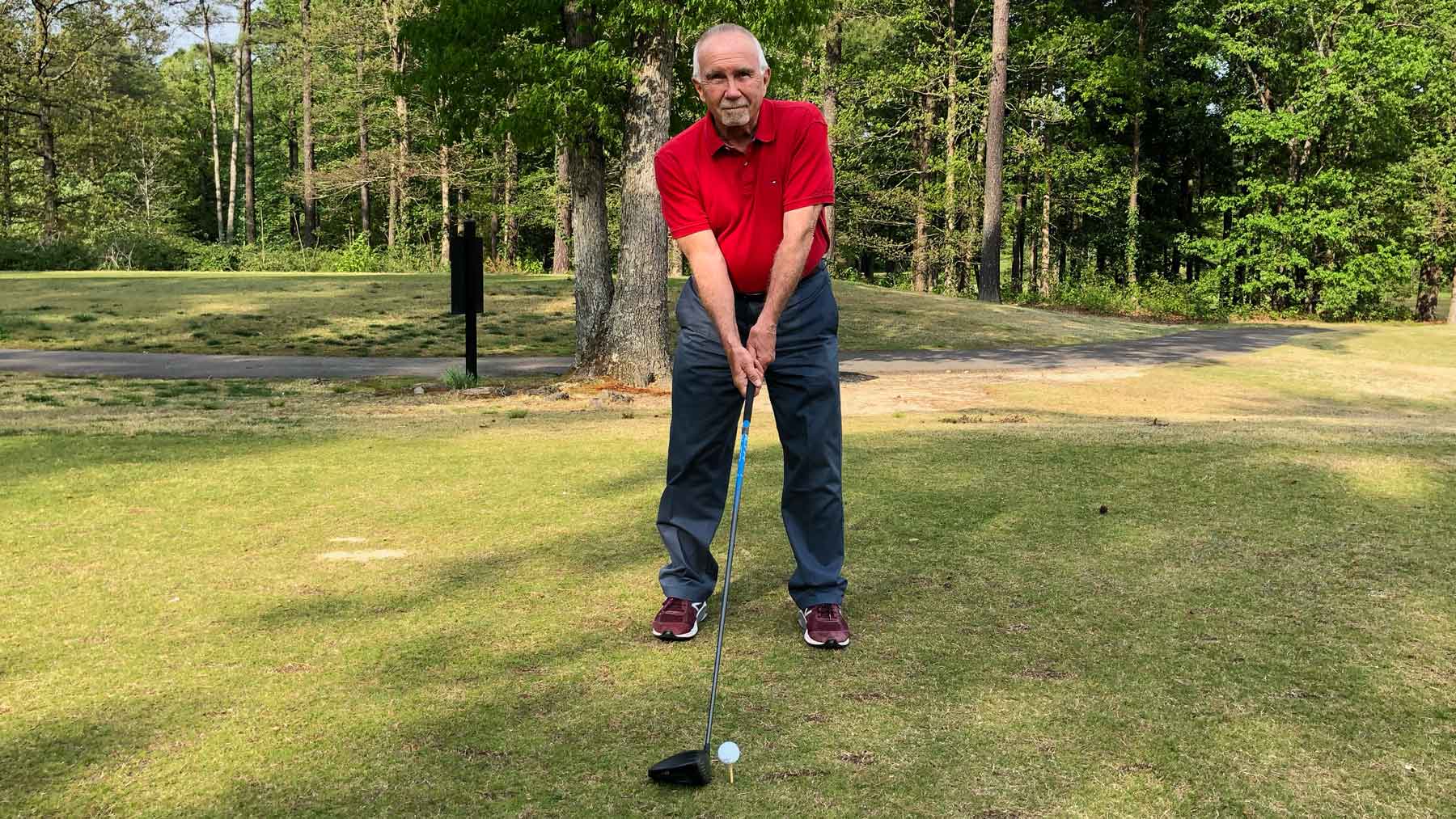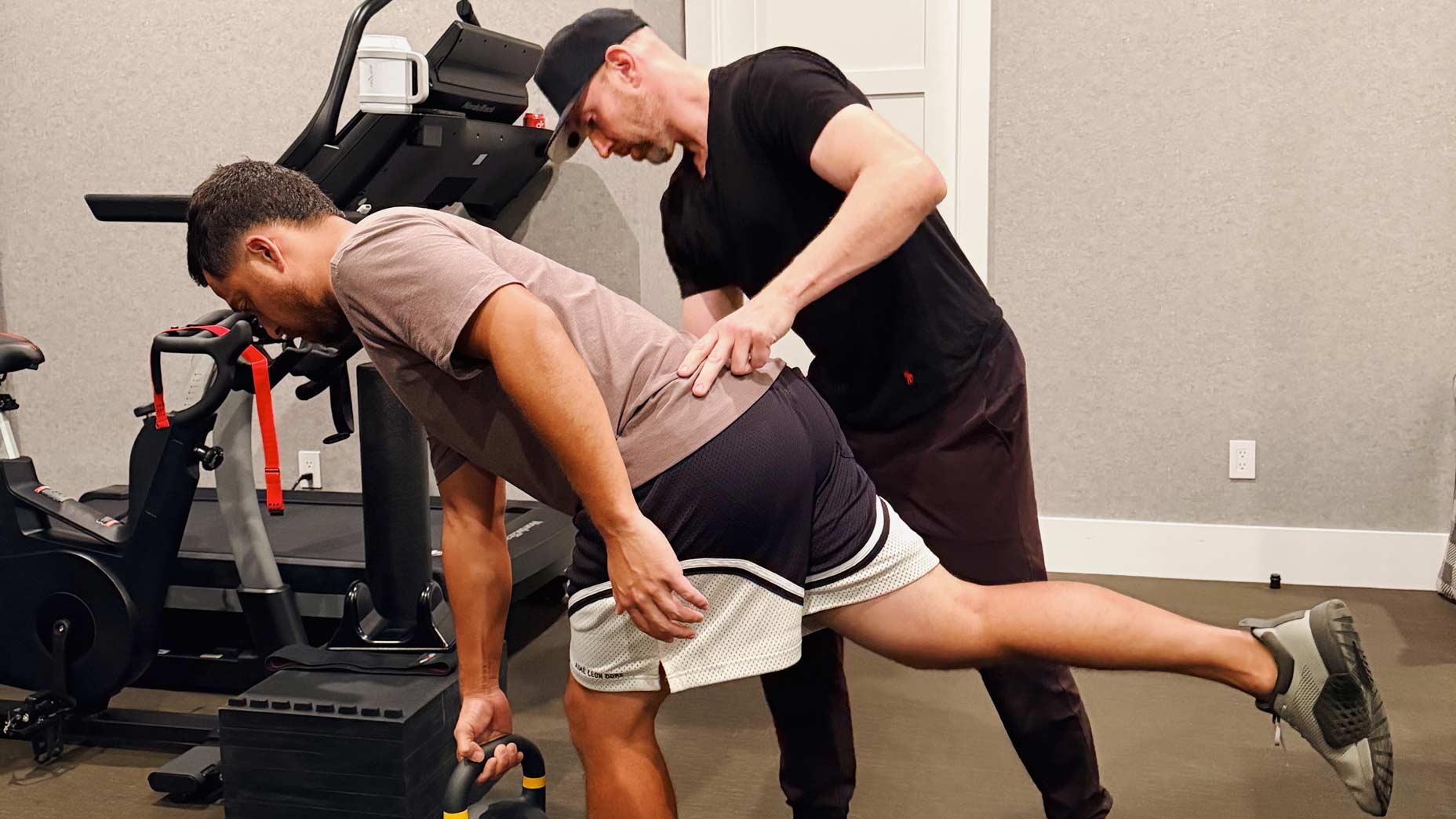Your full swing needs help. Your short game could use some fine-tuning, too. And the flatstick has forsaken you. All of which makes you just like pretty much every other golfer this side of Jon Rahm. We all need help to get better. But lessons can be intimidating, especially for beginners.
In this first installment of a three-part series — with insights from an expert swing coach at GOLF.com’s instruction partner, GOLFTEC — we’ll aim to change that by not only highlighting the benefits of professional instruction but also arming you with the intel you’ll need to maximize your time on the practice tee.
How many lessons you’ll need before you’ll see real improvement
When it comes to golf lessons from an experienced instructor, think relationship rather than fling. A quick three-lesson stand will likely leave you with a broken heart and far too many swing thoughts — whether those sessions are with the pro at your local club or range, or with an expert at a dedicated teaching facility.
Swing Stories: This 100-shooter’s scores were driving him ‘insane.’ Then he found a fixBy: Michael Arkush
Consider a more serious partnership, advises Kevin Tanner, a PGA Master Professional and GOLFTEC regional manager in Bethesda, Md. “You need to get with a qualified teacher who will provide comprehensive instruction and a long-term plan,” he said. “Rarely does it work for students to do one-off lessons or a short series of lessons. Those will provide very little long-term benefit. You might find something that works slightly, but doesn’t really hold or might even make problems worse.”
How to find a teacher you vibe with
Where is the teacher who will change your game? Your local driving range is one option. Topgolf locations have instructors. A pro at a private country club might be another option, given some of them offer lessons to non-members. (Call the pro shop and ask to speak with one of the teaching pros.) Stellar instruction is also usually available at top golf resorts. Or you could go to one of the 180 GOLFTEC locations around the country where every student starts with a 60-minute evaluation. That can be followed by customized game plans that last from three months to a year and include lessons, video practice and a club-fitting session.

Swing evaluation for GOLF.com readers!
What you should expect to pay for lessons
Rates vary widely – an individual hour lesson can cost from $50 to $150 (and upward of $500 or more for the highest-profile instructors), while packages can often start in the $300 range for five lessons. Just remember, though, you usually get what you pay for.
“Discounted rates are not always the best value when it comes to golf lessons,” Tanner said. “That’s probably the problem now with the golf coaching business in general. While cost doesn’t always determine the quality, it sometimes does.” GOLFTEC offers introductory 60-minute swing evaluations (or club-fittings) for $125. After that, your coach will recommend a custom plan for your needs.
Questions you should ask your would-be swing coach
Remember all those job interviews where you had to answer probing questions? Now it’s your turn. Grill your would-be coach (politely, of course!). How long have they been teaching? How many lessons have they taught? What’s their teaching philosophy? What do client testimonials or online reviews say about them? How many of their clients are getting better? Even after getting all of those answers, meet in person.
“I would say having an introductory session to show the instructor where your game is at and where you want to take it would be huge,” said Tanner, who has given more than 20,000 lessons. “I highly recommend everyone do that no matter what level you are at currently. Just taking a single lesson and showing the issues you have and what you want to improve is a total waste of money.”
Having an introductory session to show the instructor where your game is at and where you want to take it would be huge. Kevin Tanner
What to expect in your first few lessons
A good instructor will sniff out lies about your game after he or she watches about five of your swings and be honest about your flaws right away. “In the first session what I want to hear from a new student are the scores they are shooting right now and what scores do they want to shoot in the future,” Tanner said. “I know as a coach that the results will be there if the work is done.”
The “I want to drop 10 strokes in five lessons” request comes up less and less these days, according to Tanner, but managing expectations is still challenging. “Some people come in and totally get it,” he said. “They buy in ready to work on it for a couple of years to get better. They want a coach.”
Then there’s the in-betweeners.
“Those people need some convincing and we need to produce some results pretty quickly to help them understand the value of sticking with the process,” Tanner said.

Or maybe you’re the over-estimator who thinks your drives go 280 when they barely crack 225. That’s (almost) not your fault.
“Many times I find people just have no idea about their game,” Tanner said. “I ask about their playing stats, like how close do their chip shots get to the hole? People will say they get within six feet of the hole more than half the time. In reality, they only get 10 percent of their shots inside six feet.”
No matter your current level of play, it’s almost a sure thing that lessons will help.
“There’s no one out there who does not have the opportunity to improve,” Tanner said. “It’s just a matter of whether they’re going to give the coach enough time and lessons to get to that point.”











